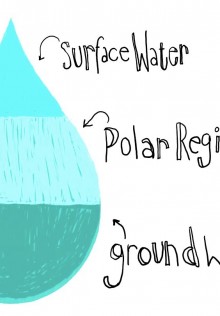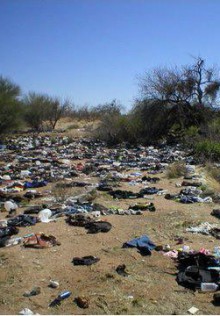-
Earth Water
“Water scarcity is an abstract concept to many and a stark reality for others. It is the result of myriad environmental, political, economic, and social forces.
Freshwater makes up a very small fraction of all water on the planet. While nearly 70 percent of the world is covered by water, only 2.5 percent of it is fresh. The rest is saline and ocean-based. Even then, just 1 percent of our freshwater is easily accessible, with much of it trapped in glaciers and snowfields. In essence, only 0.007 percent of the planet’s water is available to fuel and feed its 6.8 billion people.” – National Geographic JournalThe World Economic Forum’s Water Resources Group (WRG) warns that global water demand will exceed supply by over 40% by 2030. Closing this gap could cost as much as $50bn to $60bn a year over the next 20 years.
Though, the obvious solution to this problem is water conservation and better management, the current trend is geared towards building more desalination plants. This is not a sustainable answer to the declining water supplies due to high installation cost, extensive maintenance, and adverse environmental effect. There is a number of promising innovative desalination technologies that have emerged in the last few years, including seawater greenhouse systems and dewvaporation. Unfortunately, they are expensive to install, have low water production capacity and are not applicable in many geographical areas.
-
Ignorance is Bliss
The scarcity of the fresh water is not a new phenomenon. The world recognized the magnitude of the problem shortly after the peak of the industrial age. Hundreds of books, thousand of scientific papers, and decades of the awareness campaigns later, we find ourselves facing the same agonizing predicament: the natural commodities, including fresh water, can not sustain the pace of the perpetual economic growth.
The solutions to the declining fresh water supply have ranged from “taking shorter showers” to “towing a glacier”. Nevertheless, the facts are that the rivers are running dry, the million year old aquifers are being emptied or contaminated with the record speed, and increasingly more people suffer from the lack of clean water. The so called “green revolution” and other modern agriculture techniques have exacerbated the problem by switching the food production to “water thirsty crops.”
The other major negative tendencies inherited in the Western Culture are recently acquired insatiable appetite for cheap meat and poultry products (growing 1 kg of beef requires 15,000 liters of water and 4,500 liters to grow 1kg of chicken), the incessant thirst for drinking bottled water (it takes 1.85 gallons of water to manufacture the plastic for a bottle), and consumerism in general (the cotton needed to make a t-shirt requires in average of 1000 liters of water and 7500 to make a pair of jeans). These and many other factors contribute to draining our water reserves faster than nature can replenish them.


